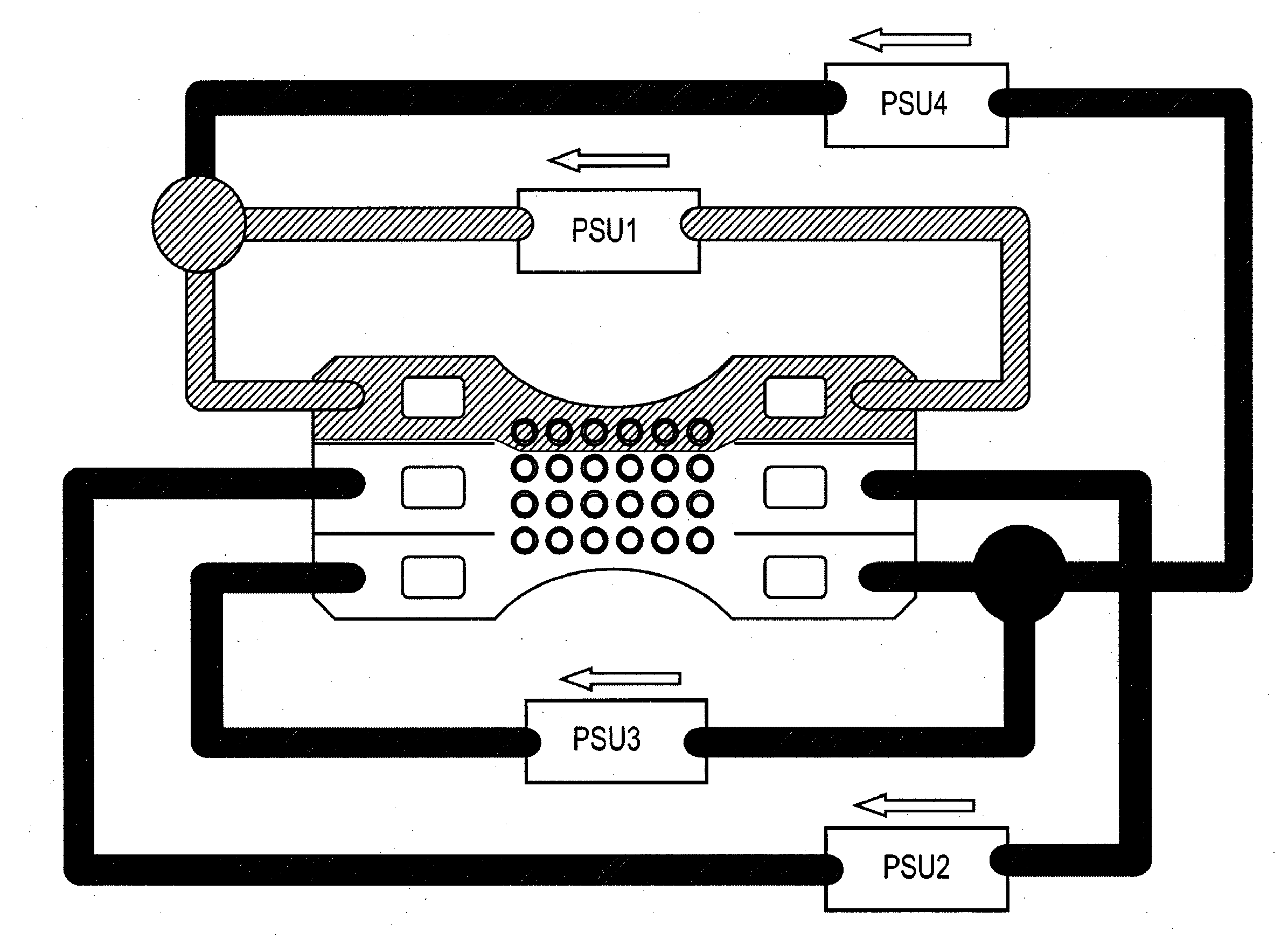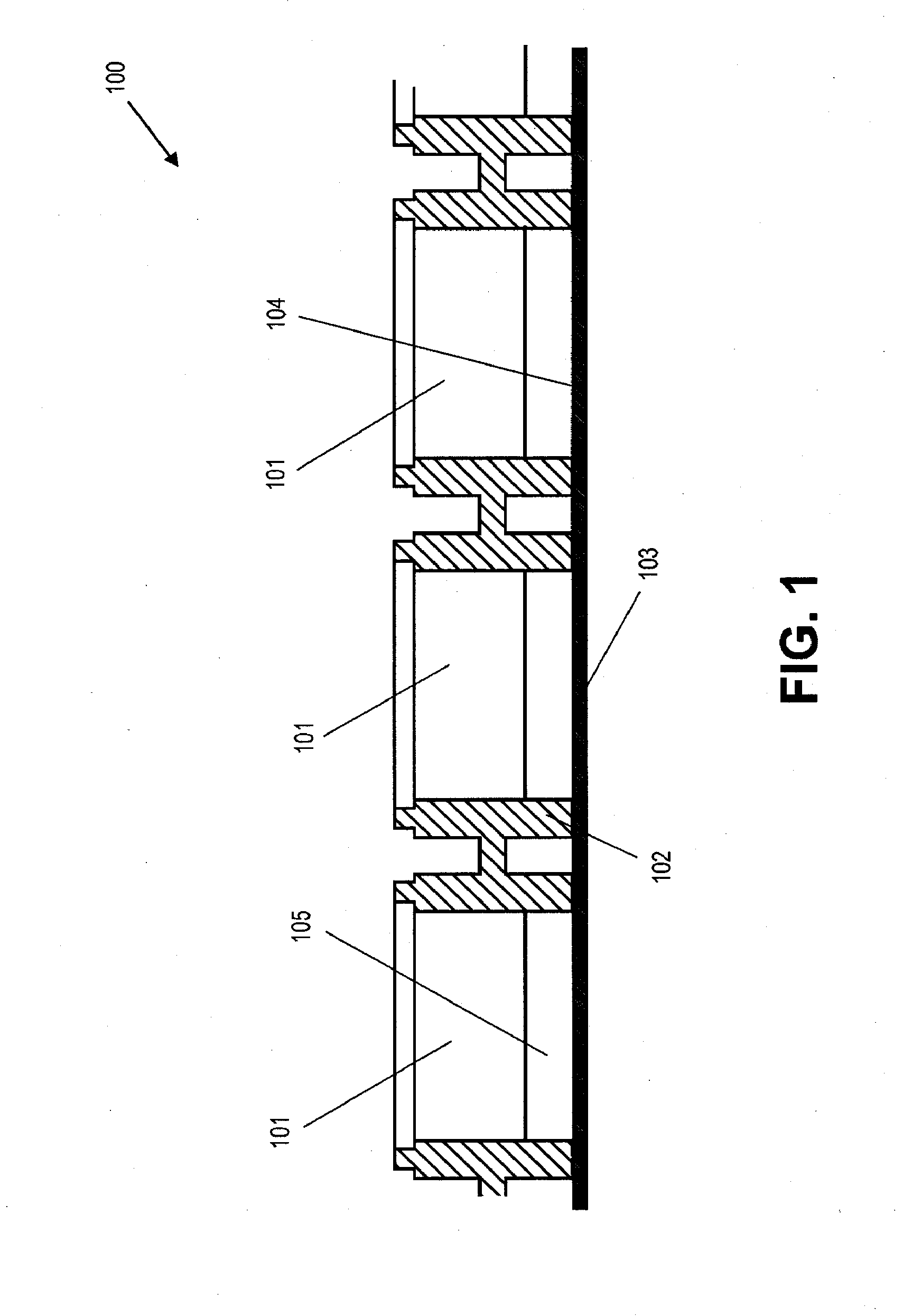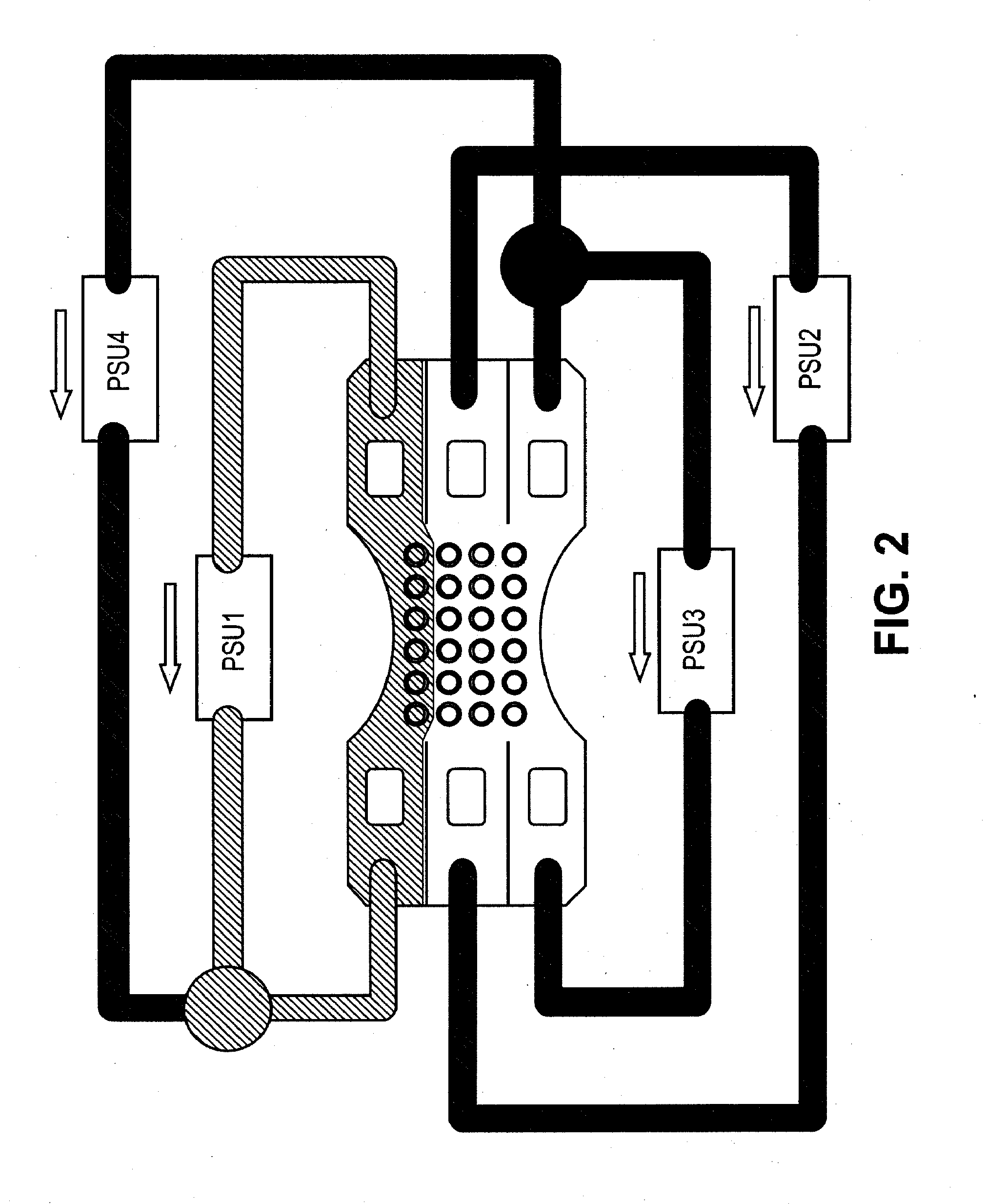Methods and systems for fast PCR heating
a technology of pcr heating and heating chamber, which is applied in the field of methods and systems for fast pcr heating, can solve the problems of limiting the maximum rate of change of temperature that may be practically employed, increasing the differentials that may be measured within a liquid sample, and generating heat in a heater, etc., and achieves the effect of low cos
- Summary
- Abstract
- Description
- Claims
- Application Information
AI Technical Summary
Benefits of technology
Problems solved by technology
Method used
Image
Examples
example 1
Coated Metal Plate
[0126]Nominally 0.4 mm thick metal plates were produced from bulk processed material on a large scale where a metal ingot (e.g., 5 ton metal ingot) enters the process and is rolled and coated in a continuous operation. The material was an aluminum alloy rolled to a half-hard condition and then coated on one side (e.g., a top side) to a nominal thickness of about 10 microns with a polypropylene compatible material. This material allows polypropylene to be heat-sealed (or welded) to the metal plate, and does not inhibit the PCR. The other side (bottom) of the sheet was coated with an epoxy primer to a nominal thickness of 5 microns. This is present to normalize the infrared emissivity of the bottom side of the sheet. The material was slit into 160 mm wide strips and supplied in coiled form to an automatic stamping line where the individual plates are produced. The epoxy coating was then selectively removed from the contact fingers at the ends of the plates to allow e...
example 2
Polypropylene Moulding
[0127]To contain the liquid samples placed on the plate, a polypropylene moulding consisting of an array of vertical tube structures was welded to the metal plate of Example 1. The polypropylene moulding was formed of a plurality of tubes to define sample areas (or wells). The size and pattern of the tubes may be a matter of user choice; any pattern that fits within the actively temperature-controlled area in the middle of the plate may be used. Two familiar-looking options were selected: a 6×4 tube array on a 9 mm pitch, and an 8×12 array on a 4.5 mm pitch. The whole assembly weighed 10.5 g and was readily recyclable. Appropriately for a single-use item, the manufacturing cost of the consumable was low.
[0128]While certain microplates have been describes as being consumable ore recyclable, it will be appreciated that in some cases such microplates need not be consumable or recyclable. In some embodiments, such microplates may be reusable, non-consumable, or non...
PUM
| Property | Measurement | Unit |
|---|---|---|
| thickness | aaaaa | aaaaa |
| thickness | aaaaa | aaaaa |
| thickness | aaaaa | aaaaa |
Abstract
Description
Claims
Application Information
 Login to View More
Login to View More - R&D
- Intellectual Property
- Life Sciences
- Materials
- Tech Scout
- Unparalleled Data Quality
- Higher Quality Content
- 60% Fewer Hallucinations
Browse by: Latest US Patents, China's latest patents, Technical Efficacy Thesaurus, Application Domain, Technology Topic, Popular Technical Reports.
© 2025 PatSnap. All rights reserved.Legal|Privacy policy|Modern Slavery Act Transparency Statement|Sitemap|About US| Contact US: help@patsnap.com



